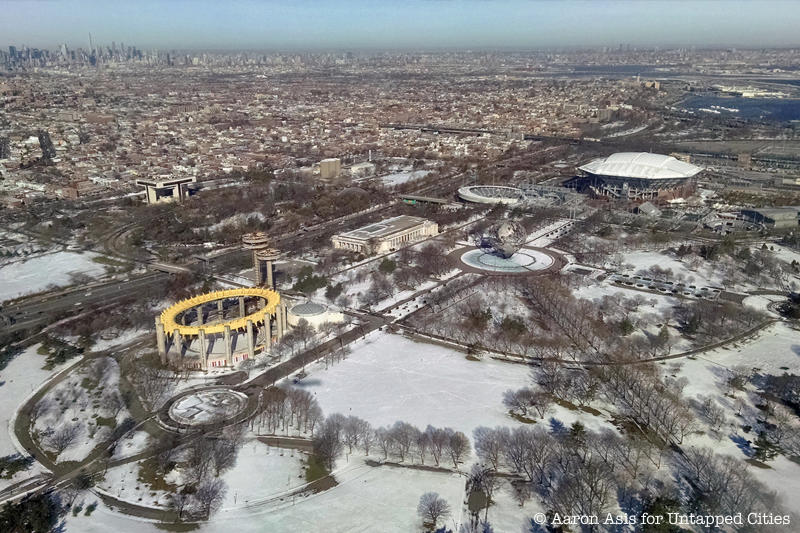
While the 1939 and 1964 World’s Fair in New York may be a distant cultural memory, it’s undeniable that its architectural remnants–the New York State Pavilion, the Tent of Tomorrow, and the Space Needle–are some of Queens’ most recognizable landmarks. Symbolically, the two mid-century World’s Fair, not only culturally defined New York but also the United States.
The World’s Fair events were also a moment of optimism for children all over America. Carl Sagan, one of the world’s most important scientists first discovered his passion for science from the 1939 Fair’s “World of Tomorrow” science exhibit. Supreme Court Justice Sonia Sotamayor experienced similar inspirations at the 1964 World’s Fair as a youngster. Additionally, the pavilion structure encapsulates the technological advancements of the time from an architectural and engineering point of view and its abandoned remains the disposable, consumerist mentality the era ushered in.
With such influence, wouldn’t the New York State Pavilion serve New Yorkers and Americans decades of further excitement? Apparently not. After the 1964 World’s Fair, the NYS Pavilion had limited usage for the public. Sitting inside the large Flushing Meadows Corona Park, the Pavilion became neglected, abandoned and deteriorated. In 1970 an ice skating rink was opened but closed shortly after. With the exception of a few movie sets including Men in Black, the pavilion became yet another blighted area of past memories. Preservation efforts of the pavilion started back in 1966, when Nathan Silver listed the pavilion as a possibility of destruction. In 1994, the Queens Theatre took over the area of the Circarama and uses the decayed pavilion as a storage area. The Pavilion was listed on the New York State Register of Historic Places and the National Register of Historic Places in 2009.
On Monday, the New York City Parks Department held a public event at the Queens Theatre called “Listening Sessions”regarding the future of the NYS Pavilion. The event consisted of architects, historians, preservationists, and park employees. After a brief presentation of transformative World Fair sites in cities such as Paris, the room broke into three groups to discuss questions such as the iconic nature of the Pavilion and solutions to restoration.
Almost all participants at the event argued that even partial demolition of the pavilion would not only be counterproductive to restoration but would also be too costly. The Parks Department laid out figures of costs for renovation, which includes two policy decisions – demolition and or not. Demolition would cost about $14 million. The bigger question though is the future of the pavilion. What should we do with this public space?
A recurring term during the talks was how to adaptively re use the space. Some argued from a business perspective, giving companies such as ESPN rights to advertise which could start at $100,000 in advertisement revenue. Others want to use the space as a community area that encourages local engagement while representing a connection to the world. Additionally, the structure and design of the pavilion discourages re-use of something completely different from its former operations. Regardless of plans for usage, the Parks Department noted that 2014 is the year for the conversation to begin. This year is the 50th anniversary of the 1964 World’s Fair and an attempt to engage the public in revitalizing the pavilion is a must for future use.





